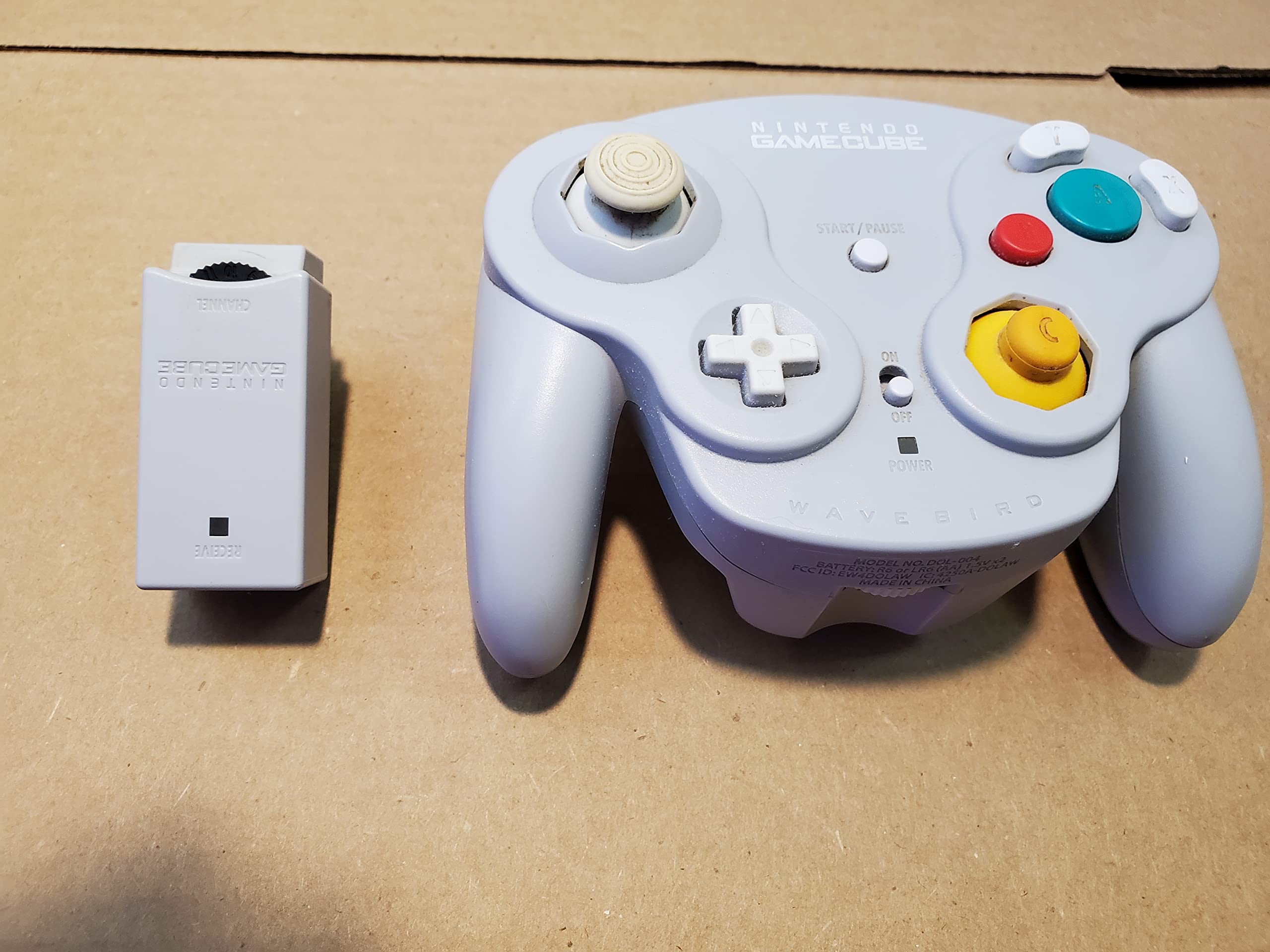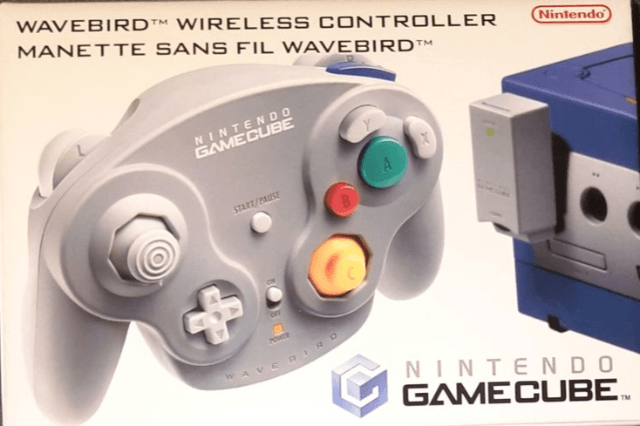The Wavebird Controller, released by Nintendo for the GameCube in 2002, revolutionized the way gamers interacted with their consoles. With its innovative wireless technology, it provided players the freedom to enjoy their games without the hassle of tangled cords. Imagine sitting back on your couch, immersed in your favorite game, without the worry of tripping over a long cable! This controller was not just a design achievement; it also integrated ergonomic features and maintained the quality synonymous with Nintendo products. In this section, we'll explore what made the Wavebird such a beloved device and why it continues to hold a special place in the hearts of gamers.
Overview of Controller Features

The Wavebird Controller is packed with features that enhance the gaming experience. Here’s an in-depth look at what makes this controller stand out:
- Wireless Technology: The Wavebird uses radio signals, allowing players to have a range of about 30 feet from the GameCube. This means you can enjoy your games from anywhere in the room without being tethered to the console!
- Ergonomic Design: Its shape, which fits comfortably in your hands, is designed to minimize fatigue during long gaming sessions. The button layout is intuitive, making it easy for both newcomers and seasoned players to adapt.
- Rumble Capability: One of the major features of the Wavebird is its built-in rumble functionality, delivering tactile feedback that enhances immersion. This allows players to feel the action, whether it’s an explosion or a gentle touch.
- Battery Life: The Wavebird Controller is powered by two AA batteries, delivering an impressive battery life that can last up to 100 hours of gameplay. This means less time worrying about changing batteries and more time gaming!
- Compatibility: While designed for the GameCube, the Wavebird can also be used with the Wii’s GameCube controller ports, maintaining its relevance in modern gaming.
- Channel Selection: The controller features a channel selector on its back, allowing up to three Wavebirds to be used simultaneously without interference. Perfect for multiplayer gaming sessions!
In summary, the Wavebird Controller combines cutting-edge technology with thoughtful design to deliver an unparalleled gaming experience. Its wireless capabilities, comfort, and rumble feature make it a standout accessory that resonates with gamers of all ages. If you’re looking for a controller that balances functionality and fun, the Wavebird is a fantastic choice.
What is Rumble and How Does it Work?

Rumble refers to the tactile feedback feature primarily found in gaming controllers, adding an extra layer of immersion to your gaming experience. Have you ever played a racing game where you felt the controller shaking as you hit a bump in the road? That’s the magic of rumble!
So, how does it work? At its core, the rumble functionality is powered by small motors inside the controller. Here’s a quick breakdown:
- Motor Mechanism: The controller has one or more small electric motors with off-center weights attached. When these motors spin, they create vibrations that you can feel in your hands.
- Game Integration: Developers can program the game to activate the rumble feature at specific moments—like during explosions, collisions, or even subtle environmental changes.
- User Experience: This feedback creates a more engaging experience, allowing players to 'feel' the action happening on-screen, making the gameplay more immersive.
All of this means that when you’re racing a car or battling an enemy in a game, the natural movements and impacts translate into vibrations in your hands, enhancing your sense of being part of the action. Rumble has evolved over the years, but at its essence, it’s all about making gaming more fun and responsive!
Wavebird Controller Rumble Functionality
The Wavebird Controller, an iconic wireless game controller for the Nintendo GameCube, was groundbreaking when it introduced the ability to play wirelessly without sacrificing functionality. But how does it handle rumble?
While the Wavebird itself is a wireless marvel, it's important to note that the original model doesn't have built-in rumble functionality. However, it does interact effectively with Nintendo’s rumble accessories. Here’s how it works:
- Compatibility: The Wavebird can connect to the Nintendo GameCube Rumble Pak, which can be inserted into the controller's slot. This setup enables rumble support during gameplay.
- Battery Power: The Wavebird operates on two AA batteries, giving it a long battery life. However, if you use a Rumble Pak, it can consume more power, so players should consider this when gaming for extended periods.
- Enhanced Experience: When paired with the Rumble Pak, players can enjoy the combined benefits of wireless freedom and the immersive feedback of rumble, creating a more enjoyable gaming experience.
In essence, while the Wavebird Controller may not have rumble built-in, it certainly accommodates it through accessories. This balance of wireless convenience and tactile feedback is part of what made the Wavebird a beloved choice among gamers.
Comparison with Other Controllers
The Wavebird controller made quite the splash when it hit the gaming scene, but how does it stack up against its competitors? Let’s dive into a comparison to see what sets it apart, especially in terms of functionality and rumble features.
When comparing the Wavebird to more conventional wired controllers, it’s important to note the *wireless freedom it offers. Imagine playing your favorite GameCube titles without the hassle of tangled cords! This is something the Wavebird delivers exceptionally well. In terms of ease of use, it's like moving from a flip phone to a smartphone – once you experience it, there's no going back.
Now, let’s not forget about the rumble feature*. While both the Wavebird and certain modern controllers, like the PlayStation DualShock series, include rumble capabilities, the effectiveness and feel can vary widely. Here’s a quick breakdown:
| Controller | Wireless | Rumble Feature |
|---|---|---|
| Wavebird | Yes | Yes, but basic |
| DualShock 4 | Yes | Highly responsive |
| XBox One Controller | Yes | Advanced rumble |
While the Wavebird has its charm with nostalgic GameCube games, more recent controllers have significantly upgraded rumble technology, offering players a more immersive experience. Ultimately, choosing the right controller boils down to personal preference – some may cherish the Wavebird's retro feel, while others might lean toward the modern features of newer devices.
Conclusion on the Wavebird's Rumble Feature
In concluding our exploration of the Wavebird controller and its rumble capability, it's essential to appreciate its historical significance and how it paved the way for future wireless gaming. When it comes down to functionality, the rumble feature was a nice addition, but let’s be honest – it didn’t revolutionize gaming experiences.
The Wavebird’s rumble is certainly present; however, it lacks the depth and responsiveness that today’s gamers have come to expect. If you’re planning to dive into a GameCube classic, the rumble adds some fun, but don’t expect a fully immersive experience. Think of it as the cherry on top rather than the whole sundae.
In the grand scheme of gaming, the Wavebird serves as a nostalgic reminder of simpler times. It’s reliable, comfortable, and very much beloved among fans of retro gaming. Yet, as technology continues to advance, we can’t help but look forward to the future of rumble capabilities in controllers, which have become a foundational part of immersive gameplay in today’s gaming landscape.
 admin
admin








